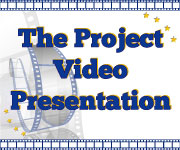basic information
THE INITIATIVE PROMOTER’S PERSPECTIVE
In 2007, due to the massive arrival of immigrants to our community and the high demand of resources, counseling, and teachers training in classes, our team proposed the creation of a WEB page as a guide for the lessons, remedial education, and numerous teachers interested in the teaching of Spanish. Our page includes a compilation of pages of interest found on the web and a space for the creation of practical materials produced by our team.
1-To support the acquisition of linguistic and communicative basic competences of immigrant students.
2-To collaborate with the educational community: tutors, guidance departments, teachers of remedial education, teachers of the areas … in the development of support actions for the teaching of the hosted language, as well as the incorporation of an intercultural perspective to the educational process, providing materials and methodological suggestions.
3-Developing programmes promoting the socio- emotional insertion of immigrant students with the educational community.
4-Providing our students’ families with all type of resources of the WEB and WIKI.
5-Facilitating motivational and creative methodology based on a communicative approach, working through tasks and projects.
6- To give a European dimension of our methodology and tools.
7- To disseminate our experience through people, countries, agencies belonging to different intercultural contexts.
8-To create a wide social network to present, share and disseminate the tools WEB 2.0 in the teaching of the Spanish language.
We work with a methodology based on a communicative approach that emphasizes interaction and active modes of learning. As stated in the Common European Framework of Reference for Languages (CEFR), we have taken into account the following statements:
-Working on the 4 skills: listening, writing, reading and speaking in linguistic competences and extralinguistic competences of the language (gestures, performance, cultural differences…)
-Students are the protagonists in the learning process. Therefore, teachers become a guide for the acquisition of communicative activities and providing students with the necessaries tools to improve their learning.
To do so, we have established a guideline:
-Respecting our own culture and others.
- Demystifying stereotypes of different cultures.
-Promotion of respect attitudes.
- More emphasis on active modes of learning among culturally diverse students inside and outside classes.
-Grammatical and vocabulary learning is conditioned by communicative functions, situations, and students’ interest focus.
-More emphasis on team work to facilitate learning.
-The Common European Framework of Reference for Languages is a model to our students since they can have a language learning monitoring and telling their cultural experiences.
- We also work with a didactic approach based on tasks.
Our work is the result of different tools created for Spanish students. It has been used, developed, and improved along our experience.
We started the course 2007-08 with the development of our page to disseminate the project. During the course 2009-10, we proposed the creation of a collaborative WIKI to organize resources. We have created an online method with A1 and A2 levels of the Common European Framework of Reference for Languages (CEFR).
In the course 2010-11, we extended the project until the course 2012-13 because we are currently working on the development of B1 and B2 levels.
During the course 2007-2008 we proposed to embody ITCs in our services and adapt them to SAI functions (students’ support and teachers’ counseling with loan resources).
The project was disseminated using a great variety of dissemination channels:
WEB 2.0: we designed a collaborative web with the idea of researching the Spanish teaching through ITCs and Web 2.0 resources aiming at developing organized contents, explained through tutorials videos since audiovisual language is better than long written explanations. We went further involving teachers in the creation of an internal social network like Facebook.
The project was disseminated among :
-Direct and indirect target groups: general public: students, elder citizens, unemployed, teachers, policy makers, public authorities, representatives from educational and cultural institutions, other project coordinators and participants, ethnic minority groups, mass media…
The lack of the webs on the project’s leaflet by the juries or by the editors made the dissemination null. Fortunately, the project’s webs are adequate placed in Google and it has numerous visits.
In relation to the team, it has been a great stimulus to keep on working in the teaching of Spanish through ITC and 2.0.web tools.
I encourage the coordinators to disseminate their projects widely because there are lots of good works which are unknown. Besides, I demand qualified juries, trained in the field to be members of the jury.
THE NELLIP NETWORK’S PERSPECTIVE
Hola 2.0. addresses the European policies in the field of language learning because it is aimed at enhancement of the quality of language teaching, promotion of new approaches to language teaching and learning.
Comments on this Case Studies
Date: 2014.10.20
Posted by Ligiana (Romania (Prosper))
Message: I am a psychotherapist working, among other, with problems of cultural and social integration. In adition to linguistic competences, in this context, psychological competences are essential. Developing programmes promoting the socio-emotional insertion of immigrant students and pupils was an excellent initiative!
Date: 2014.10.20
Posted by Mihaela (Romania (Prosper ASE))
Message: There is a big need for learning tools focusing on Respecting other cultures demystifying stereotypes, promoting respect and cultural diversity. Very good ideea!
Date: 2014.10.20
Posted by Paula (Romania (Prosper ASE))
Message: I think this kind of projects, promoting web 2.0 tools in order to facilitate integration of migrants, are extremely important. Activities and resources deesigned by this project are very iteresting.
